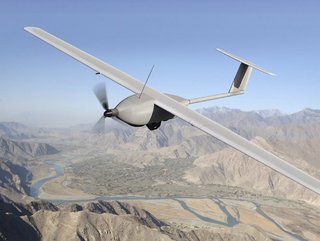Lockheed Martin military missions get AI boost from Red Hat

Lockheed Martin and Red Hat are collaborating to use advanced artificial intelligence (AI) on Lockheed’s military platforms. The company is to use the recently announced Red Hat Device Edge to support US national security missions by applying and standardising AI technologies.
Lockheed projects due to get AI-powered support include the Stalker unmanned aerial system (UAS), which will now make use of advanced software previously too large for these systems. The software enables small platforms to handle large AI workloads, increasing their capability in the field and driving faster, data-backed decision-making.
In a recent demonstration, Lockheed Martin used Red Hat Device Edge on a Stalker UAS to demonstrate how AI-enhanced sensing can advance Joint All-Domain Operations. The Stalker used onboard sensors and AI to adapt in real time to a threat environment.
The Stalker was flying an intelligence, surveillance and reconnaissance (ISR) mission to detect a simulated military target, says Lockheed. Once the Stalker detected the target, project engineers used Red Hat Device Edge to update the Stalker’s software in flight. The new software – managed by Red Hat Device Edge from that point – enabled the Stalker to deploy updated AI-based computer vision capabilities, also known as automated target recognition capabilities.
As a result, Stalker could more accurately classify the military target, providing more useful ISR data and enhancing the situational awareness of the threat environment for US military decision-makers.
“With Red Hat Device Edge, Lockheed Martin is leading the infusion of cutting-edge commercial technology into military capabilities that deliver advanced solutions to our customers,” says Justin Taylor, Vice President, Artificial Intelligence, Lockheed Martin. “Unlocking these AI technologies can help national security decision-makers stay ahead of adversaries, enabling a safer and more secure world.”
Edge capabilities allow workload changes on-the-fly
Red Hat Device Edge delivers an enterprise-ready and supported distribution of MicroShift, a lightweight Kubernetes orchestration solution built from the edge capabilities of Red Hat OpenShift, along with an edge-optimised operating system built from Red Hat Enterprise Linux. This latest product in the Red Hat edge portfolio allows an organisation’s architecture to evolve as its workload strategy changes, says the company.
Lockheed Martin, Red Hat and other industry collaborators are working on 5G.MIL capabilities with RAN Intelligent Controller (RIC) functionality using Red Hat OpenShift, the industry’s leading enterprise Kubernetes platform, to deliver resilient communications for the Department of Defence.
Lockheed Martin is a key contributor to the MicroShift project, collaborating to help build out the project’s edge capabilities for remote and inaccessible environments. The company plans to use Red Hat Device Edge and edge Kubernetes capabilities for military projects in all its areas of focus - land, sea, air, space and cyber.
“Lockheed Martin is at the forefront of global innovation that often defines a technological era,” Francis Chow, Vice President and General Manager, In-Vehicle Operating System and Edge, Red Hat. “With our latest solution, Red Hat Device Edge, we’ll be able to work together to change what communications and artificial intelligence looks like in the most space-constrained and far-flung environments, whether it’s a remote mountain range or beyond the boundaries of Earth’s atmosphere.”






